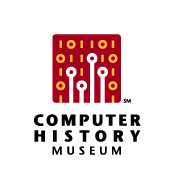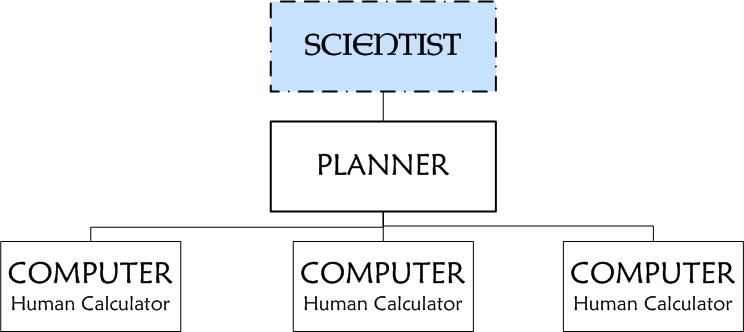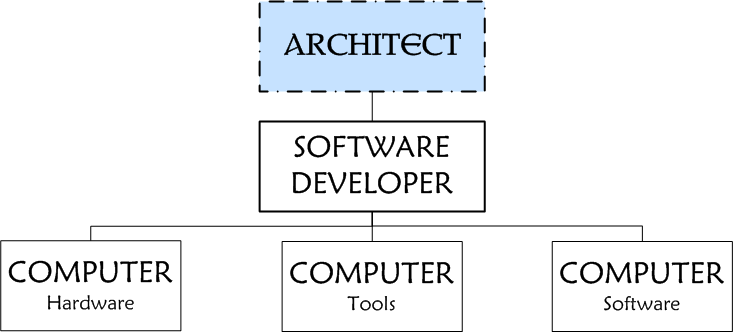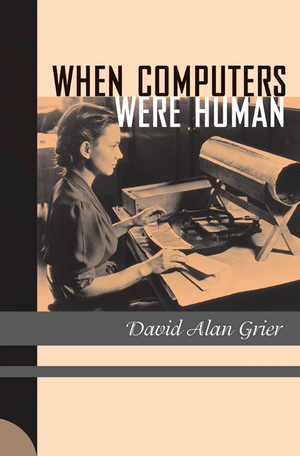1700s to 1970s
-----------------------------------------------
Software Development Today
Although the Scientists, Clairault, Lalande and Lepaute came up with the initial problem, the planner broke down the formula into workable parts. The human calculators were divided into mathematical operations, addition, subtraction, multiplication and long division. Apparently this set up was used through the early to mid 1970s when the mechanical computers finally became cost effective enough to totally replace the human computers.
As a matter of fact, the human computers were as efficient and accurate or more so than the mechanical computers until the late 1940s. Cyberpunk fans who remember William Gibson
There was an interesting sociological aspect to human computers. As for most scientific fields, mathematics were traditionally closed to women, poor men, people of color and handicapped. Unless, of course, they were an arisocrat like Nicole-Reine Lepaute or "sponsored" by a white male (such as a wives and/or daughters) who had already established himself in the field. Different social conditions changed the opportunities for these groups to more fully particiate in mathematics. Starting in the late 1800s in general, women were gaining more rights, which translated to more college graduates which led to more women with careers that required mathematical degrees.
Wars in the early 1900s required math tables to help soldiers in the field to aim weapons accurately. The shortage of the men who typically did that kind of work opened opportunites for the people mentioned above. Works Projects Administration (WPA) Mathematical Tables Project was run during the Depression by Gertrude Blanch, a mathemetician oman who deserves to take her place in the history of computing along side Charles Babbage and others for her work in pioneering work in numerical analysis and computation. Her staff of over 400 computers gave many women, poor men, people of color and handicapped a chance to use their mathematics skills in a time when they wouldn't have been given a chance otherwise.
When Computers Were Human
ABSTRACT OF TALK
What did it mean to be a human computer? Who were the first ones? Before Palm Pilots and iPods, PCs and laptops, the term “computer” referred to people who did scientific calculations by hand. In his book When Computers Were Human, David Alan Grier, editor of IEEE Annals of History of Computing, offers the first in-depth account of these workers, who were neither calculating geniuses nor idiot savants but knowledgeable people who, in other circumstances, might have become scientists in their own right. Beginning with the return of Halley's Comet in 1758 and the effort of three French astronomers to compute its orbit to the UNIVAC electronic computer projecting its 1986 orbit, Grier traces “human computers” through the ages. Come join Grier, along with former “computers,” for this look into a little-known slice of high tech history.







No comments:
Post a Comment